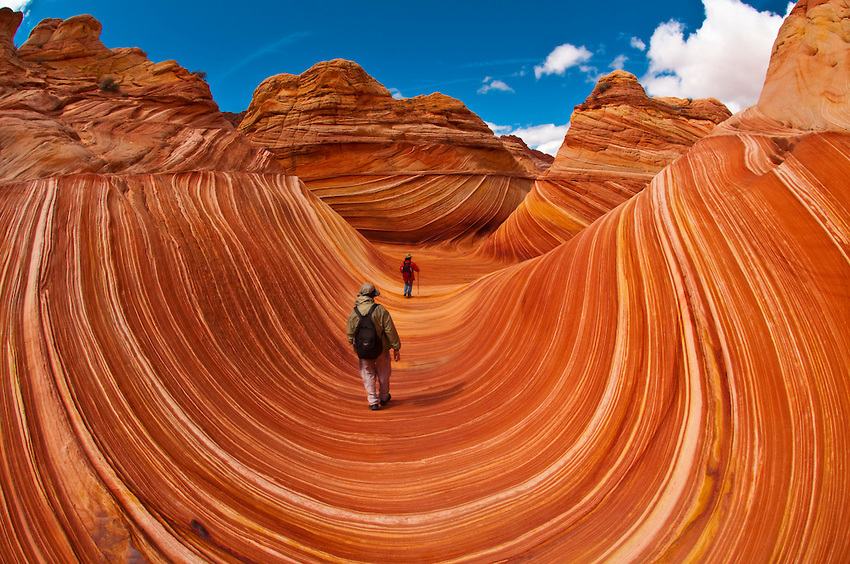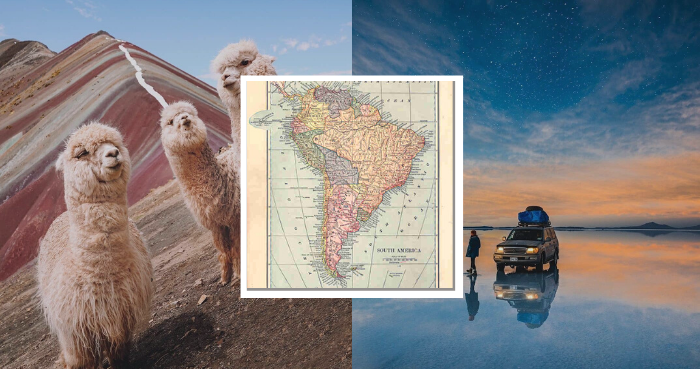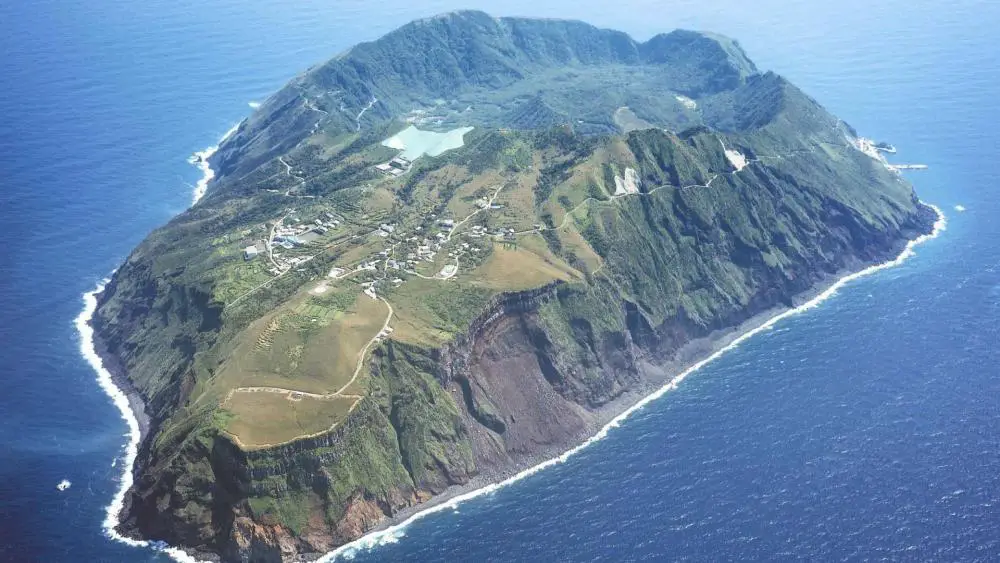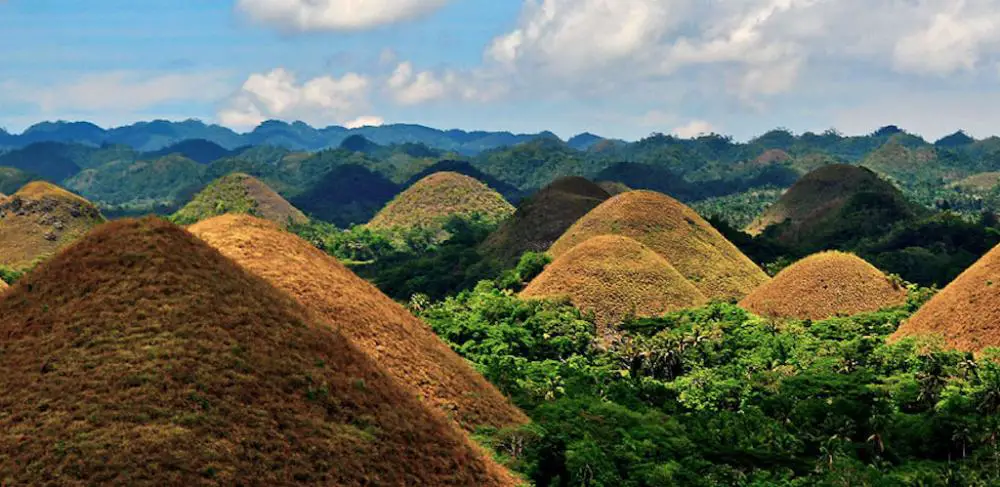Over 70% of the earth’s surface is covered by water and this huge area contains some of the most amazing wonders on the planet. Shockingly, huge portions of the world’s oceans have yet to be discovered but the areas that have been explored have already provided some incredible sights; from huge shipwrecks thousands of metres deep, to enormous underwater springs that create a giant Jacuzzi effect. The planet’s oceans and lakes provide a rich selection of different treasures. The following are 20 of the greatest underwater wonders of the world.
Deep Sea Vents. Ecuador
Until relatively recently, the deepest depths of the ocean floor couldn’t be reached by humankind. This may go some way to explaining why it took until 1977 for the incredible deep sea vents off the coast of Ecuador, to be discovered. The hydrothermal vents were discovered to the east of the Galapagos Islands, some 2,400 metres below the surface. The vents were formed due to two tectonic plates diverging, causing sea water to shoot out at incredible speeds and high temperatures (around 400 degrees centigrade). Before the deep sea vents were discovered, it was thought that life couldn’t exist at such depths, due to the lack of sunlight. Scientists found a number of marine animals around the vents though, living off the nutrients that they expelled. These incredible underwater volcanoes really are one of the underwater wonders of the world.
The Great Barrier Reef. Australia

The Great Barrier Reef is not only the world’s largest coral reef system, it is also the world’s largest single structure made by living organisms. The reef is located off the northeast coast of Australia and is so large it can even be seen from space! The area stretches an incredible 1,400 miles (2,300km) and is made from millions of tiny living organisms, known as coral polyps. The reef also supports a huge variety of different marine species; from whales, sharks and dolphins, to turtles, stingrays, sea horses and millions of different species of fish. The area is unsurprisingly an incredibly popular location for scuba diving and was even named by CNN as one of the “Seven natural wonders of the world.
Cleopatra’s Heracleion. Egypt
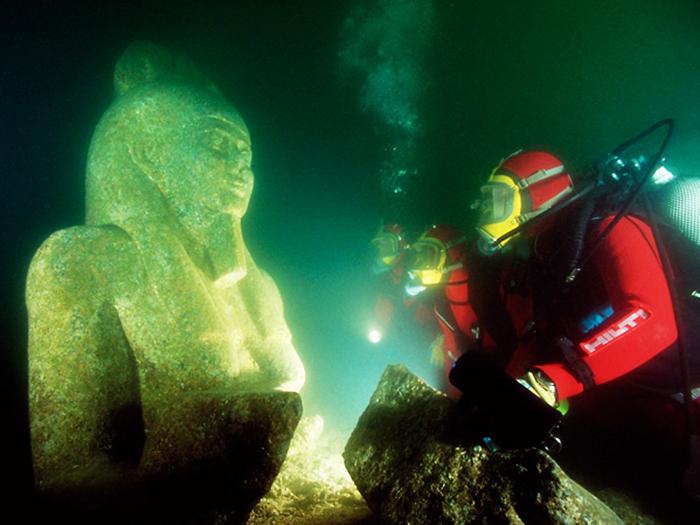
It was thought that the ancient Egyptian city of Heracleion had been lost forever when it sank into the sea over 1,500 years ago, but in 2000 the first remains of the city were discovered off the coast of Alexandria in Egypt. French archeologist, Dr Franck Goddio, came across the underwater archaeological site and, following further investigation, divers discovered sphinxes, statues, columns, temples and even the foundations of a palace that may have belonged to Cleopatra herself! Further investigations also unearthed coins and other everyday objects, as well as a number of ships, suggesting that the site was indeed the location of the 8th century BC city. Many of the objects recovered from the sea floor were also still in excellent condition, making the discovery even more incredible!
Lake Baikal. Russia
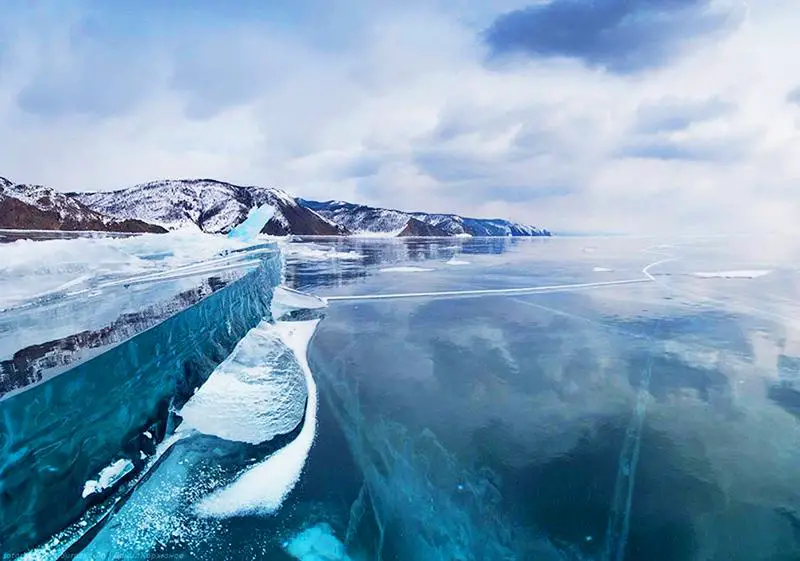
It is little surprise that Lake Baikal has made it on to this list and there are a many number of reasons why it is one of the underwater wonders of the world. The lake is located in the south of Siberia and is believed to be the oldest lake in the world, estimated at around 25 million years old. Baikal is also the world’s largest freshwater lake and contains an incredible 20% of the planet’s unfrozen freshwater. It is also the deepest freshwater lake in the world and is one of the clearest lakes on the planet. If that wasn’t impressive enough, Baikal also contains around 1,700 different species of animals and plants, of which two thirds of these (around 5,650) cannot be found anywhere else on the planet! The lake’s location also means it experiences a huge temperature change between the summer and winter months and spends much of the winter in a crystalized, frozen state. A truly spectacular sight!
Yongala Shipwreck. Australia
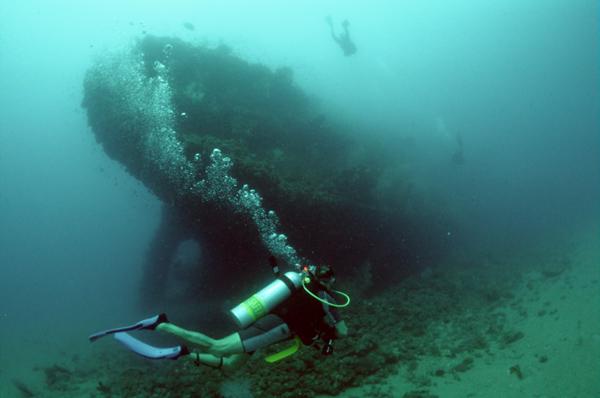
Many ships have been lost to the deep depths of the ocean, but one of the most incredible wreck dives in the world can be found off the coast of Queensland in Australia. The Yongala was a steel passenger and freight steamer that sank in 1911, after being hit by a cyclone, which killed all 122 people on board, as well as a racehorse and a bull. The ship had no telegraph facilities onboard, so could not be warned of the terrible weather ahead. The remains of the ship were not discovered until 1958, but the wreck is now a popular location for scuba divers. The Yongala is one of the most popular shipwreck dives in the world, with the chance of seeing bull and tiger sharks, manta rays, octopuses and turtles, as well as the beautiful coral that adorns the side of the boat.
Jellyfish Lake. Palau
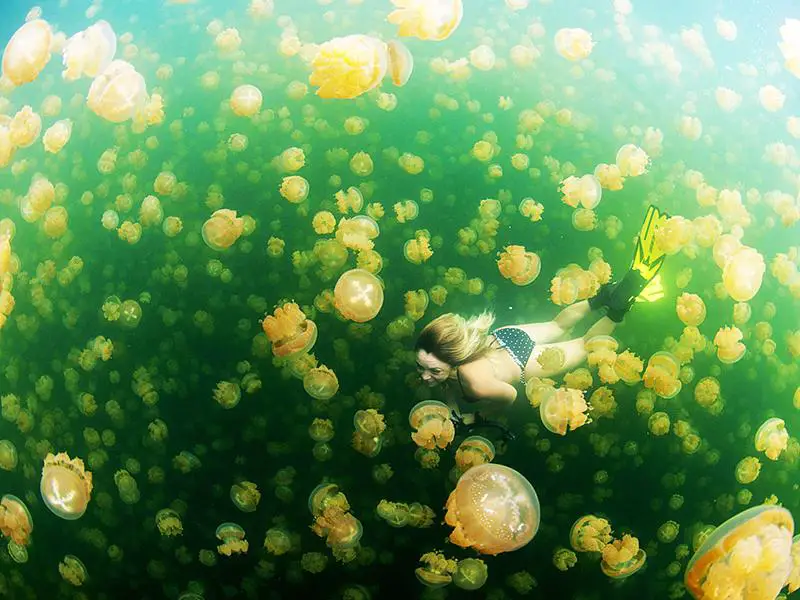
If you want to experience the truly exotic, then Jellyfish Lake in Palau should not disappoint. The lake is located on the island of Eil Malk, which is part of the Rock Islands in Palau’s Southern Lagoon. The secluded lake is connected to the ocean through small tunnels in the ancient Miocene reef and is home to a huge army of golden jellyfish that migrate across the water on a daily basis. The lake is also open to tourists, who have the opportunity to snorkel with the jellyfish for a $100 pass. Although the jellyfish do contain stinging cells, they are very weak and not powerful enough to cause serious damage to human skin. Jellyfish Lake is a truly unique location and undoubtedly one of the underwater wonders of the world.
Dean’s Blue Hole. Bahamas
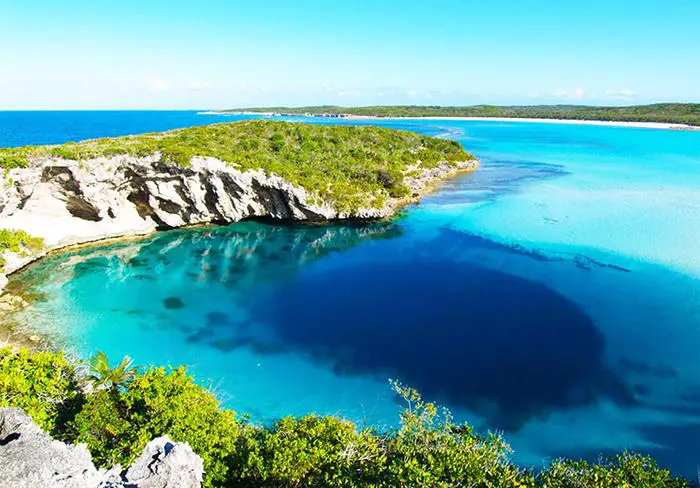
A blue hole is the term used for a sinkhole that has an entrance under the surface of the water, with many of these holes opening up into underwater caverns. Dean’s Blue Hole in the Bahamas is the deepest ocean sinkhole in the world. The popular dive site has a diameter of around 25-35 metres at the entrance and opens up into an incredible 100m wide cavern below. The cavern plunges to a breathtaking depth of 202 metres (663ft) and is easily the deepest ocean blue hole in the world. When you consider that the maximum known depth of other ocean sink holes is around 110 metres, you realise just how unique and large the Dean’s Blue Hole is.
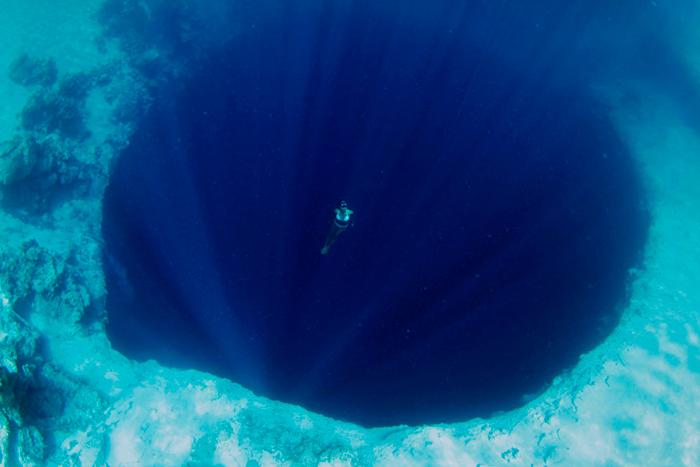
Chuuk Lagoon. Micronesia
In February 1944 the USA launched an attack on Chuuk Lagoon that devastated Japan’s main WWII South Pacific base and sunk 12 warships and 32 merchant ships in the process. The majority of these ships are still located on the lagoon’s floor today and make Chuuk Lagoon “the biggest graveyard of ships in the world.” Many of these ships are also still in excellent condition and attracts thousands of divers each year, eager to explore the incredible site. The huge war ships also house the remains of fighter aircraft, torpedoes, motorcycles railroad cars and tanks. Chuuk Lagoon really is an underwater WWII museum and one of the most incredible dive sites in the world.
Douglas Dakota DC-3. Turkey
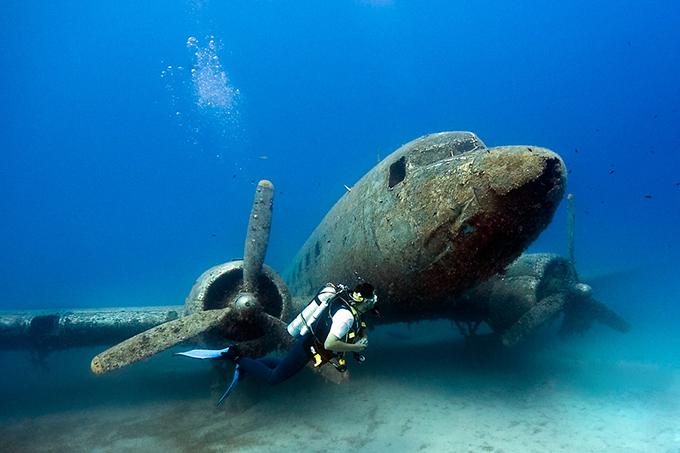
From the photo above it may look like the passengers on this paratrooper plane met a disastrous end, but this Douglas Dakota DC-3 didn’t crash into the sea during the Second World War. The plane was actually intentionally sunk in 2009 in order to create a unique playground for divers to explore. The aircraft, which was used as a transporter for a Turkish paratrooper regiment in WWII, was sunk in the waters of Cas, off the coast of Turkey. It lies 21 metres beneath the surface of the Mediterranean Sea and can now be freely explored by divers and is home to numerous schools of tropical fish.
Lion City. China

A real life version of Atlantis can be found at the bottom of a man-made lake in China. In 1959, the Chinese Government decided that they wanted to build a new hydro-electric power station and so made the call to build a huge lake in the Eastern Provence of Zhejiang. The lake was built between the Five Lion Mountain and the ancient city of Shi Cheng (Lion City), that was flooded in order to make way for the power station. The city has been untouched for over 50 years. A dive team has recently rediscovered the remains of the city but there are now plans to turn it into a dive site. Incredibly, the dive team said that nearly every structure in Lion City was still intact, even after lying underwater for over half a century!
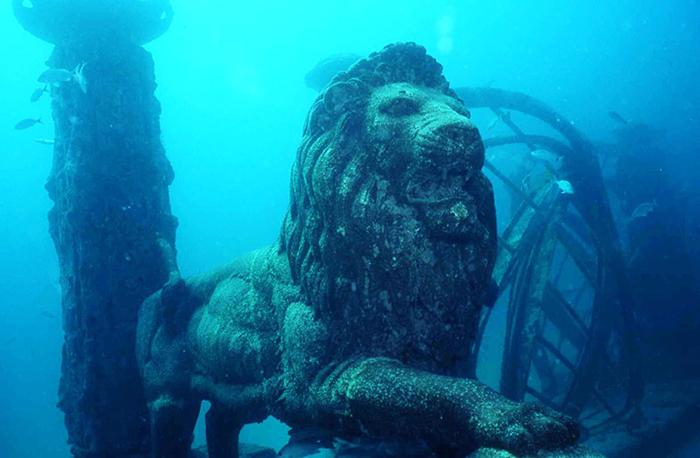
Zhemchug Canyon. Bering Sea
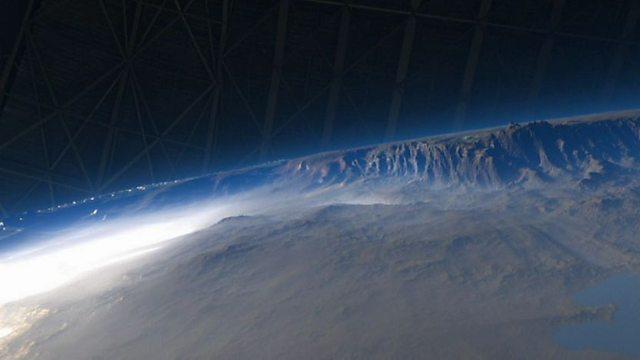
The Grand Canyon may attract millions of visitors each year but the underwater Zhemchug Canyon in the Bering Sea would actually fit the whole Grand Canyon inside it, with room still to spare. The incredible underwater ravine can be seen from space and sits an incredible 2.6km deep (compared to the Grand Canyon’s 1.8km). Zhemchug is officially the biggest canyon in the ocean and is home to a number of different species of animals, including the Northern Fur Seal, the short-tailed alabatross, the snow crab and a number of different species of whales.
Belize Barrier Reef. West Indies
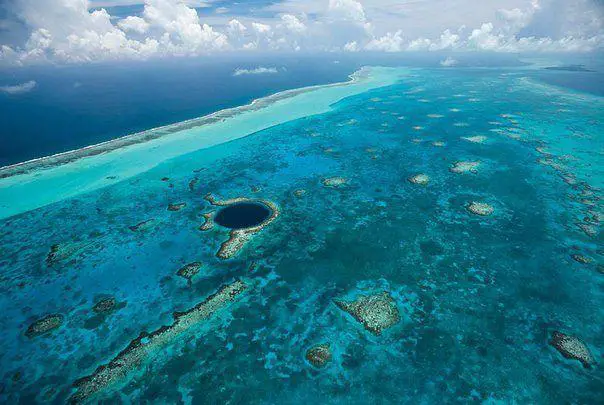
The Belize Barrier Reef may not be able to match up to Australia’s Great Barrier Reef in terms of size but it certainly makes up for it in beauty. The incredible stretch of ocean is home to one of the most diverse ecosystems in the world. The reef stretches an impressive 190 miles (300km) long and is part of the Mesoamerican barrier reef system, which is the second largest coral reef system in the world. The Belize Barrier Reef is home to over 500 species of fish, 70 hard coral species and 36 soft coral species. Perhaps most impressive of all though, is the fact that around 90% of the area still needs to be researched, suggesting that so far only 10% of all the species in the coral reef have been discovered!
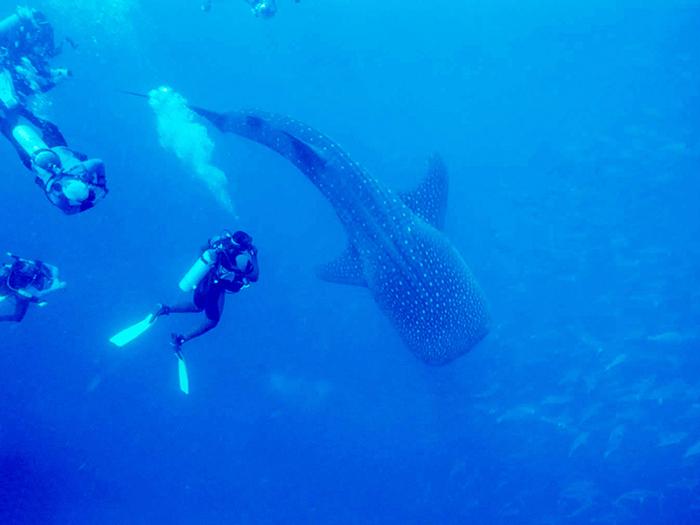
Cocos Island. Costa Rica
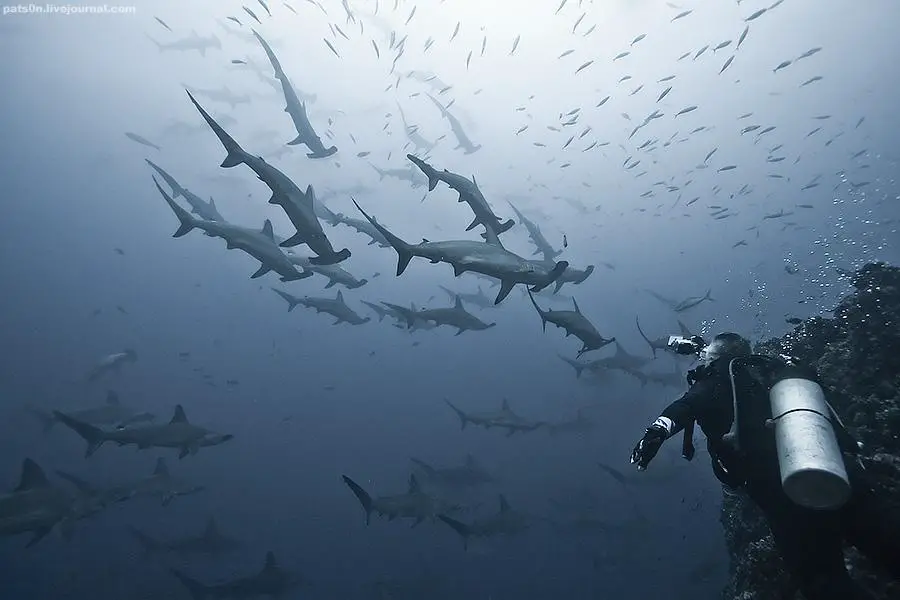
The waters off Cocos Island in Costa Rica are a scuba divers dream and they are rich with a variety of marine life. The deep waters that surround the island, some 340 miles from the coast of Costa Rica, are teeming with rays, dolphins, turtles and, most impressively, large schools of sharks. The coral reef that surrounds the island attracts a large variety of wildlife, which in turn, makes the waters the ideal hunting ground for sharks. Cocos Island, also known as ‘Shark Island,’ is home to Whitetip reef sharks, whale sharks and hammerheads. The scalloped hammerhead shark is the most common visitor to the island’s shores and, during the wet season (June- Oct), schools of hundreds of hammerheads can be seen in the waters. A truly spectacular sight and undoubtedly one of the underwater wonders of the world.
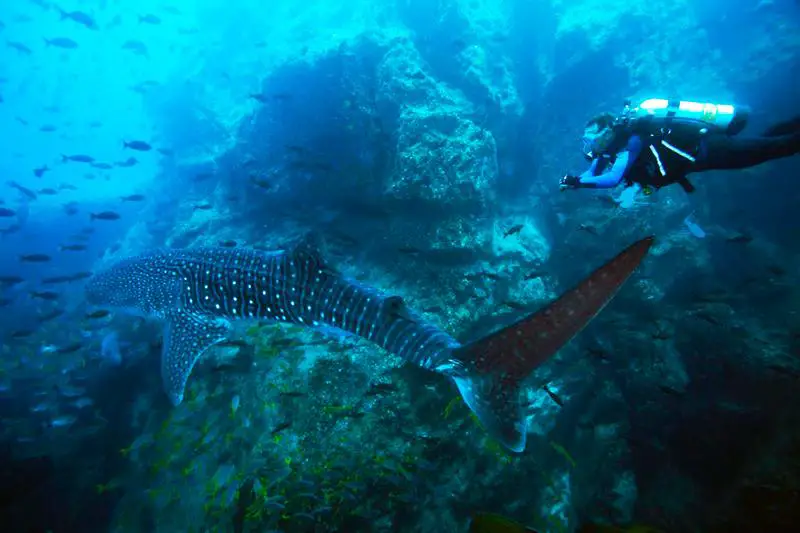
The Northern Red Sea
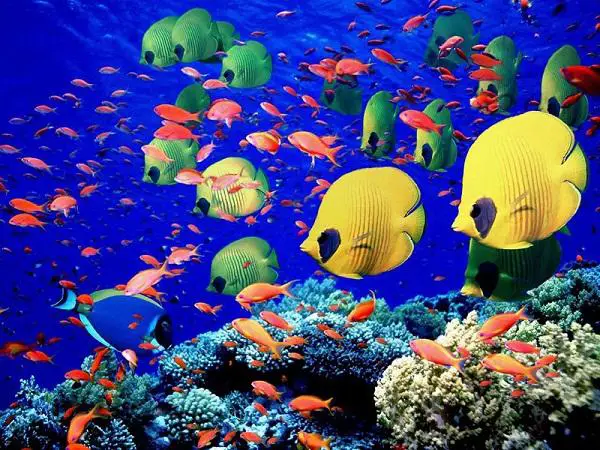
The Northern Red Sea has been described as “the underwater Garden of Eden” and it is easy to see why. The stretch of water between Asia and Africa is home to some of the most beautiful coral reefs in the world and some of the most exotically coloured fish. The Northern Red Sea covers 169,000 square miles and is home to over 70 species of hard coral, 30 species of soft coral and more than 500 different species of fish. The area is a hugely popular site with scuba divers, who are attracted by the chance of diving in the warm tropical waters, witnessing the beautifully coloured coral reefs and spectacular assortment of exotic fish.
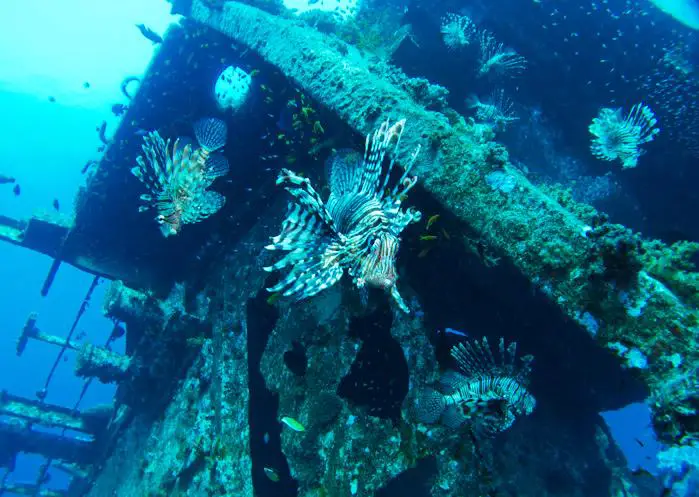
Battle of the Egadi Islands. Sicily
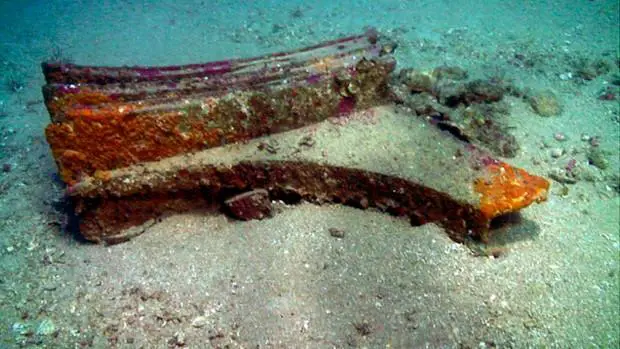
In November 2013, one of the most incredible underwater discoveries was found off the coast of Sicily. The remains of battering rams, helmets, armour and weapons were recovered from the sea floor, believing to date back to a naval battle that took place over 2,000 years earlier. The artefacts are thought to be from the Battle of the Egadi Islands, which took place in 241 BC. It was part of the Punic War, between the Romans and the Carthaginians, which lasted 20 years and was the beginning of the Roman’s european wide domination. It was believed that 50 Carthaginian ships were sunk in the fighting and their remains stayed at the bottom of the ocean for over 2,000 years!
Mauna Kea. Hawaii
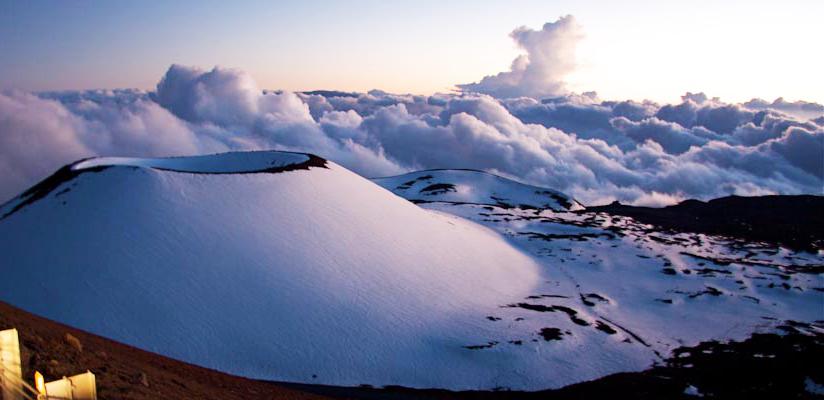
Although Mount Everest may be the highest mountain on land, it pales in comparison to Mauna Kea in Hawaii. The peak of Mauna Kea is the highest point above land in Hawaii but much of the dormant volcano actually sits below sea level. Measured from its oceanic base, the tip of Mauna Kea would actually measure 10,100m, much more than the height of Mount Everest and officially the highest mountain in the world! The volcano is estimated to be around one million years old and is without doubt one of the underwater (and overwater) wonders of the world.
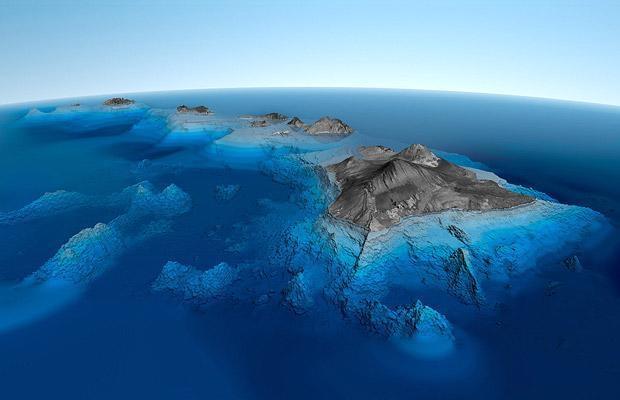
Bronze Age Sewn Boat. Croatia

In March 2014 one of the oldest boats ever constructed was found at the bottom of Zambratija Cove, in Croatia. Marine archaeologist, Giulia Boetto discovered the Bronze Age sewn boat, which dated all the way back to 1,200 BC. The vessel was a type of wooden boat that was sewn together using rope, roots and willow branches. The relic measured 7 metres in length and 2.5 metres in width and was still in remarkable condition, with some stitching still visible. A remarkable achievement, especially considering it was over 3,000 years old!
Underwater Ruins. Japan
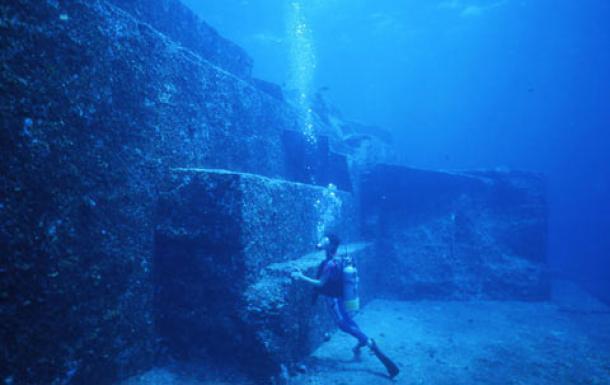
One of the most hotly debated underwater discoveries dates back to 1995 and is still producing differing theories today. A wayward diver stumbled across the ancient ruin site off the southern coast of Yonaguni, Japan. The site appeared to show huge stone blocks cut into the shape of stairs, paved streets and crossroads. The discovery is estimated to be around 10,000 years old, with many scientists believing it to be the remains of an ancient sunken city. Not everyone agrees though and some experts believe the large blocks are naturally formed and the result of tectonic movement. Whatever the answer may be, it is undoubtedly one of the greatest underwater wonders of the world.
Hot Springs. Iceland
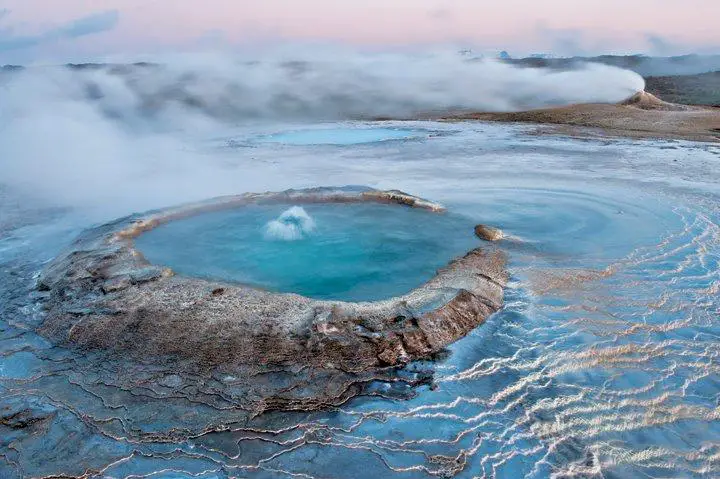
Iceland sits on highly geologically active ground and has a number of active volcanoes. This volcanic ground also provides one of the country’s most famous attractions, hot springs. There are a number of natural hot springs in Iceland where both natives and tourists go for a dip in the warm volcanic water. This water is geothermally heated by the volcanic rocks below and warmed to temperatures between 37-39 degrees centigrade. The springs not only provide a pleasant place for people to take a dip, the water is also thought to obtain natural healing abilities, soothing aches and pains as well as helping with many different skin conditions.
Dead Sea. Jordan
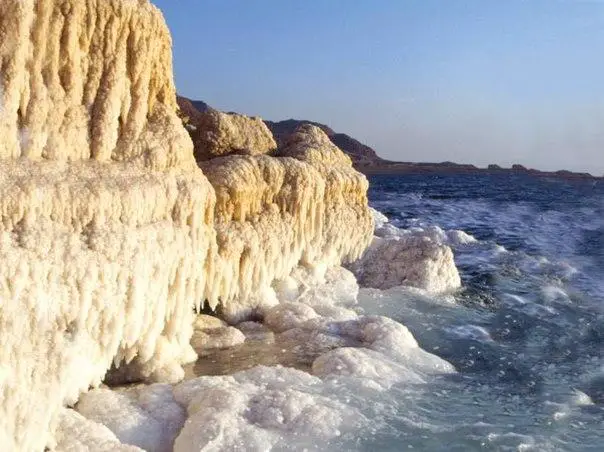
The Dead Sea may not have the nicest of names but the location is a truly spectacular sight. The Dead Sea is actually a salt lake and borders Jordan to the east and Israel and the West Bank to the west. The shores of the Dead Sea lie 423 metres below sea level, making it the world’s lowest elevation on land. The lake is also one of the saltiest bodies of water in the world and has a 34.2% salinity, that’s 9.6 times saltier than the sea! This high salt count means there is very little marine life that can survive in the water, hence the name “Dead” Sea. The high salinity also means that swimming in the lake is more like floating and many visitors travel here every year to test out the waters. The Dead Sea was also one of the world’s first health resorts, used by Herod the Great over 2,000 years ago, and is still used for its health benefits today, due to the high nutrients and mineral content in the water.

